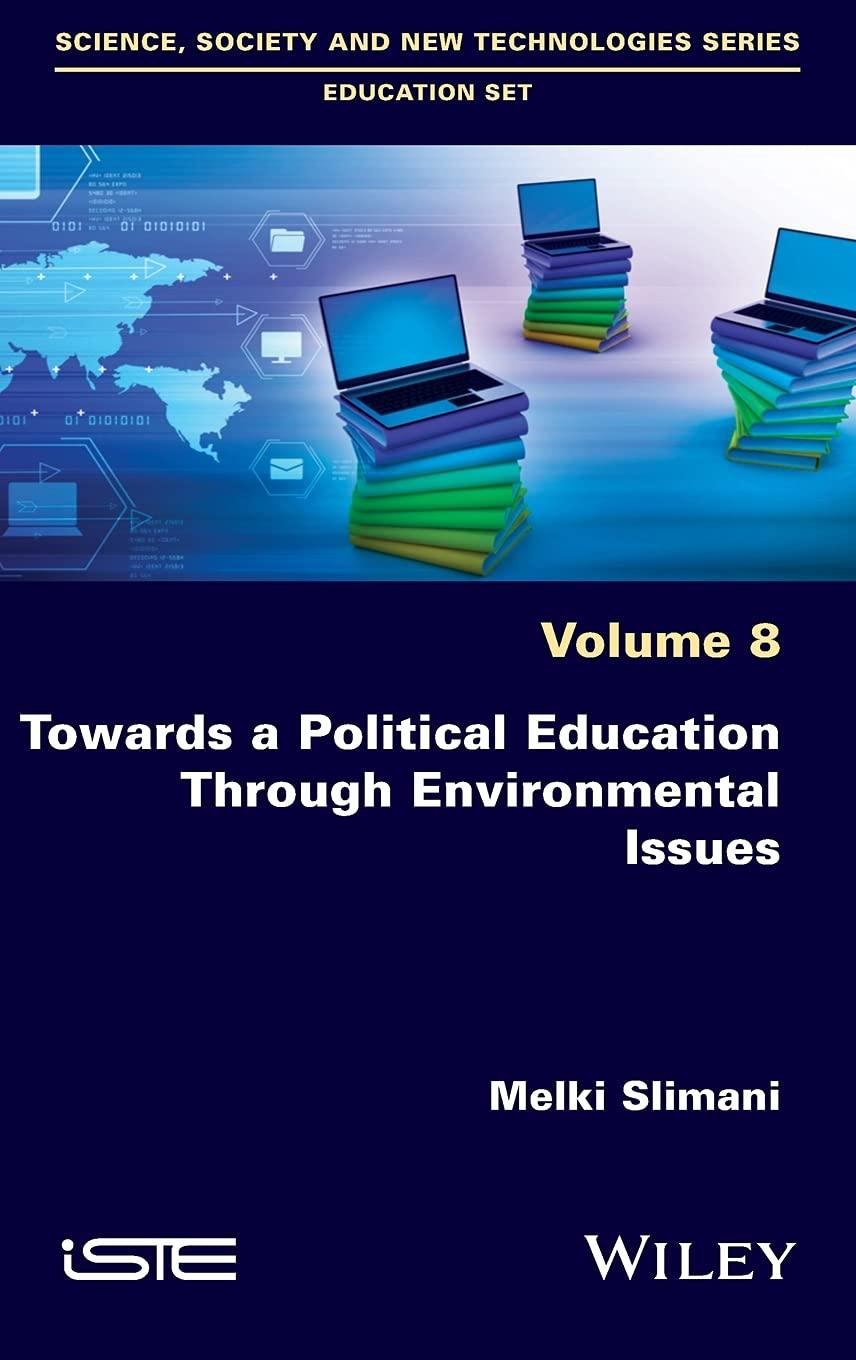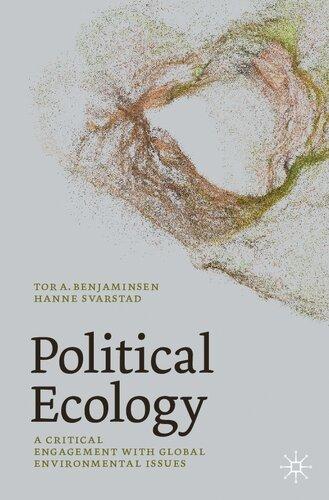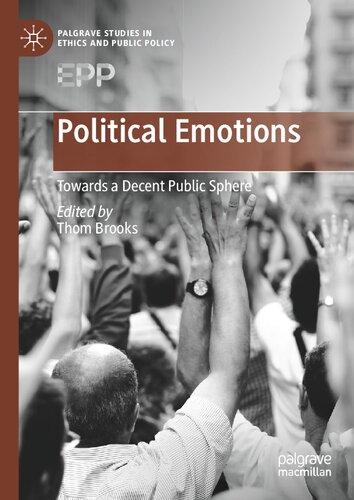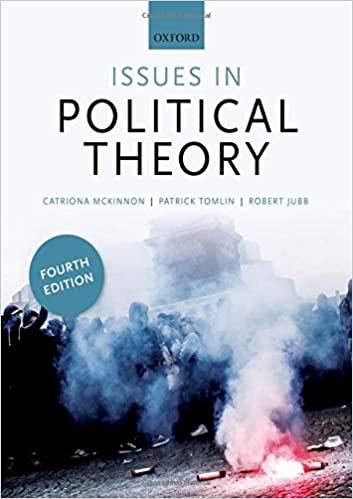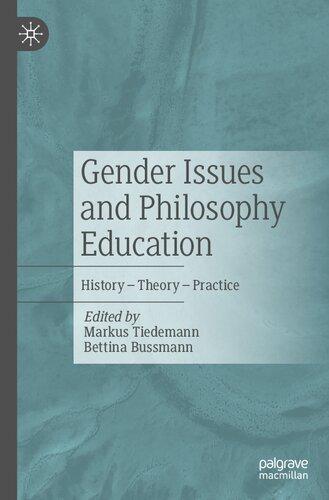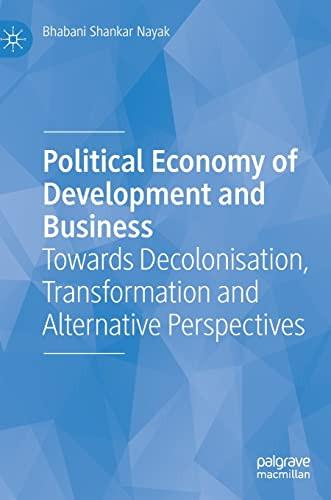Introduction
Environmental and development issues (EDIs) have emerged as a matter of public interest through a new type of political mobilization that has characterized contemporary human societies: ecological mobilization (Zaccai and Orban 2017). These mobilizations, which act as alerts for a global ecological crisis, reflect an awareness of the potentially catastrophic effect of human activity on the ecological functioning of the planet (Little 2017). EDIs have thus appeared as indicators of a turning point in political life in the Anthropocene.
Ecological mobilizations have been brought to life in the form of popular movements at the global/international level, such as the Cities in Transition1 movement, and at the regional level, such as the Climate Justice Action2 movement in Europe. While the first proposed alternatives for a more resilient urban life to economic and climate crises (Krauz 2014), the second demanded a democratization of the climate discourse and a broadening of the scope of climate change action through a confrontation with the dominant capitalist system in order to break it with acts of disobedience. A recent analysis of the discourse of transitions shows that it is becoming heterogeneous and divided between two trends: a “localist” and politicized discourse in citizen and public policy initiatives on the one hand, and a mainly economic technocentric discourse (Audet 2016) on the other.
1 The urban transition movement initially originated in Great Britain in 2006 with Rob Hopkins who, along with his students, proposed a transition model for a city. Today, there are several other transition initiatives in several countries around the world, which form an international transition network.
2 In Europe, Climate Justice Action is a network of European grassroots movements that came into being in October 2014 at a time when COP21 symbolized the collective struggle for climate and social justice.
Comparing the conceptions of “political community” in these two movements also makes it possible to illustrate other trends running through them. In fact, actors in the Cities in Transition movement tend to see themselves as a harmonious geographical community linked to similar local communities (depoliticized conception), whereas actors in the Climate Justice Action movement conceive society explicitly in conflictual terms and consciously integrate themselves into this explicitly politicized context of contestation (Kenis 2016).
Parallel to these popular movements, the international political scene also has a movement aimed at institutionalizing these mobilizations. The first wave of institutionalization took place within the framework of the 1972 United Nations Conference on the Human Environment in Stockholm, which was aimed at formulating expectations surrounding the link between environmental problems (resulting from the ecological crisis) and the development of human societies (Boutaud 2005). The second wave took shape within the World Commission on Environment and Development (1983–1987) leading to the “Brundtland Report3”. This report made it possible to reformulate the environmental issue in the light of the interests and expectations of various stakeholders. The third was within the framework of the United Nations Conference on Environment and Development (UNCED) in Rio de Janeiro in 1992, leading to declarations and thematic conventions (the Framework Convention on Climate Change, the Convention on Biological Diversity, the Declaration on Forests and the Convention to Combat Desertification), Agenda 21 and the Millennium Development Goals (MDGs). The most recent wave gives rise to the Agenda 2030 in the form of 17 goals (with their targets and indicators) for sustainable development by 2030. This agenda, developed by UN expert groups, is reviewed by the Economic and Social Council (the body responsible for coordination and dialogue on economic, social and environmental issues) and then approved by the UN General Assembly (the deliberative and decision-making body).
In fact, in the international arena, several EDIs – such as those arising from agroecology – constitute “contested” territory between institutionalization movements and social movements. There are two camps of actors in the field of agroecology: the camp of the World Bank and its “allies” (agricultural universities, governments, private sector, etc.) on the one hand, and the camp of social movements (Latin American agroecology movement, Latin American Scientific Society of Agroecology, International Planning Committee for Food Sovereignty, etc.) on the other. These two types of actors mobilize two opposing visions: one that sees agroecology as a set of tools to perfect the technical procedures of modern agriculture, and another that sees it as an alternative which provides tools to transform agricultural policy monocultures (Giraldo and Rosset 2018).
3 This report is entitled “Our Common Future”.
In Tunisia, environmental struggles re-emerged in the period following the events of 2011. In fact, the context of political change which was triggered has been accompanied by the emergence of environmental social movements in a way that makes it difficult to characterize such movements, even in general terms (Vernin 2017). However, the frankly political imprint of these movements remains salient. It is also noteworthy that the political management of conflicts over state land shows a trend towards institutionalizing this type of mobilization in Tunisia. This institutionalization has taken the form of a project called “Promotion of Organizations and Mechanisms of the Social and Solidarity Economy” (PROMESS). The project, advanced by the Tunisian government in its cooperation with the International Labour Organization (ILO) and funded by the Netherlands, was spread over a four-year period from 2016 to 2019 (Mokadem 2018). The creation of a legal and institutional framework specific to the social and solidarity economy is one of the main axes within this project. A draft law4 on the social and solidarity economy was already being finalized by the Ministry of Social Affairs by May 2018.
Field studies of environmental mobilizations show that these practices are part of an informal5 political education through the learning that develops among the actors who take part in it (Seguin 2015). These civic apprenticeships (Biesta 2011) on conflict and the construction of collective agreements through participation and deliberation form an informal educational process of socialization for a democratic citizenship. According to Kluttz and Walter (2018), these mobilizations involve three interconnected levels of informal political learning:
– the first level, which is microscopic, corresponds to learning that takes place in self-directed situations (individual study of environmental issues, for example), in situations where activists observe and experiment, or in situations where activists participate in conversations during workshops organized by non-governmental organizations;
– the second level, which is mesoscopic, includes the learning that takes place when activists, in elaborating their strategies to combat an issue, consider their experiences in a broader context that integrates the experiences of other activists;
– the third level, which is macroscopic, corresponds to the political learning that takes place when activists interact with their allies or opponents (police, government institutions, businesses, etc.) in forming their petitions.
4 Accessible online on the Tunisian legislative portal: http://www.legislation.tn/sites/default/files/ files/textes_soumis_avis/texte/mshrw_qnwn_lqtsd_ljtmy_wltdmny_1.pdf.
5 Informal education corresponds to learning that takes place in daily activities outside the academic framework of formal education and all other organized educational processes, such as those of non-formal education and its devices, including popular education or literacy (Brougère and Bézille 2007).
In non-formal education, Eco-Schools are one of the pioneering schemes (founded in 1994 in Denmark) that have been implemented around EDIs. In several countries6 around the world, this initiative has been developed in primary, middle and high schools (eco-schools) and universities (eco-campuses). It consists of learning support on six priority topics (food, biodiversity, waste, water, energy, social support) for the concrete implementation of sustainable development in educational institutions in partnership with the local community and the students’ parents.
Non-formal education around EDIs is also affected by international educational policies. Historically, the latter shows two successive cycles of “educational institutionalization” taking the form of two recommended mechanisms that have succeeded one another over time: the Decade of Education for Sustainable Development (2005–2014) and Education for Sustainable Development Goals.
In formal education, EDIs are covered by disciplinary curricula. In France, three school and/or academic disciplines deal with these questions: life and earth sciences, which take on the environmental dimension; economics, which takes on the economic dimension; and geography, which takes on the social dimension (Simonneaux 2011). Vergnolle Mainar (2008, 2009) notes that geography and life and earth sciences are the two disciplines that overlap the most with the environmental approach. This author also identifies areas of interdisciplinarity in the school disciplines concerned with the environment, which she differentiates into two groups: disciplines which have a significant overlap with environmental topics (life sciences, earth sciences and geography) and disciplines which are fairly unrelated to environmental topics (physics, chemistry, mathematics, technology, physical education and sport, history, civic education, economic and social sciences, French, philosophy, artistic disciplines and languages). The Tunisian context presents almost the same characteristics when it comes to school disciplines involving environmental issues.
The two international educational policy cycles mentioned above, as well as the disciplinary curricula, constitute inflections allowing the passage from informal education in ecological mobilizations to non-formal education or to formal education. Moreover, aspects in this educational trilogy can be hybridized as the line between formal, non-formal and informal becomes increasingly blurred (Barthes and Alpe 2018).
Several research programs on the links between the political and content involving EDIs in formal and non-formal education are being implemented around the world. Research in the Americas has focused on the interactions of formal and
6 These non-formal education mechanisms are absent in Tunisia. No Tunisian school is registered on the network of eco-schools website: http://www.ecoschools.global/nationaloffices/.
non-formal environmental education (e.g. for adults) with the dominant neoliberal political and economic context (Hursh et al. 2015; Stahelin et al. 2015). They open up a discussion of pedagogical practices and content that teachers can use to help learners develop forms of environmental citizenship that actively challenge the neoliberal privatization of environmental responsibility (Dimick 2015).
Other programs follow the French tradition of didactic research: that of the didactics of socially acute questions (SAQs) and that of the didactics of the curriculum of education for sustainable development (ESD). In these two programs, the political is presented according to a double register: strategic and tactical (Lange 2011). Indeed, the work of Lange (2011, 2013, 2015) on the didactics of the ESD curriculum puts forward the political as a strategic purpose of this education on the one hand and as an organizing (tactical) principle of educational situations on the other. This research has enabled proposing an analytical model of the functioning of an educational situation for sustainable development as a social academic practice of democracy. Furthermore, the work of Simonneaux (2013b) and his team (Simonneaux 2011; Bérard et al. 2016) presents the political according to the strategic register of education geared towards scientific citizenship and according to a tactical register as organizers of situations of debate and deliberation on problematic environmental issues. Such scientific citizenship can be the aim of non-formal education for the political (action research aimed at popular education in politics).
Another program borrows from the Nordic tradition (Håkansson et al. 2017) whereby the political dimension of EDIs is identified in four aspects of the political as:
– generating inclusion and consensus;
– containing cognitive and emotional elements;
– involving power;
– representing a decision-making process.
The researchers involved in that program aim to transpose the idea of the political dimension practice of teaching and research to educational situations involving EDIs. Indeed, the work of Håkansson et al. (2017) proposes a categorization of these situations according to the political trend running through them. This trend may take the form of “democratic participation”, “political reflection”, “political deliberation” or a “political moment”. More recently, these researchers (Håkansson and Östman 2018) have proposed an analytical model integrating four phases of the “political moment” in these educational situations. The work of Van Poeck and Vandenabeele (2012) and Van Poeck et al. (2014) underline the importance of analyzing the democratic character of educational practices in
terms of enriching the discussion on the democratic paradox in environmental education and sustainable development. Subsequently, these researchers set out to develop a method for analyzing “political movement” to study how teachers’ actions facilitate or hinder the opening of space for the political in educational situations (Van Poeck and Östman 2017). The work of Sund and Öhman (2014) and Sund (2016) proposes a reconsideration of the political in environmental education and sustainable development according to several guidelines (unmasking the political dimension, repoliticizing education, seeing beyond the relativistic and objectivistic divide and using emotion as a driving force).
Curricula are objects of formal schooling that privileges the universalization of its contents and strives to prohibit the unexpected and heterogeneous (Ardoino and Berger 2010). Non-formal education systems are also formalizations of the informal with normative drifts (Barthes 2017). Taking these two facts into account leads to the problem of the “fate” of the political in the EDIs when it comes to its inflections in non-formal and formal education.
This book aims to build a model in order to structure the political in educational content involving EDIs. The components of this model serve as didactic guidelines for the elaboration of the content of a possible curriculum for a political education through these questions. The book consists of six chapters.
Chapter 1, which follows the introduction, suggests that EDIs should be categorized into metathemes: environmental policies and environmental change, environmental ethics, sustainable development, agri-food issues, environmental technology and environmental management and, finally, the issue of transitions. This chapter also proposes a differentiation of the constitutive themes of these metathemes according to their anti-political or political trend. This thematic categorization refers to a historical analysis of human political thought.
Chapter 2 focuses on the development of a conceptual and analytical framework for the political potential of EDIs. This analysis identifies this potential in four components: environmental literacy, environmental deliberation, ecological citizenship and collective environmental action.
Chapter 3 presents a conceptual elaboration of political learning in educational content involving EDIs in relation to the socialization process. This learning is categorized according to four areas: learning about ecoliteracy in relation to disciplinary cognitive socialization, learning about citizenship in relation to political socialization, learning about deliberation in relation to critical cognitive socialization and learning in action regimes in relation to democratic socialization.
Chapter 4 presents the methodology for data collection and analysis. This chapter introduces the empirical research by justifying the choice of two case studies and sources of evidence considered in this study: analyses of official documents, guided interviews for teachers and learners, and observations of classroom sessions using observation grids.
Chapter 5 presents the results of analyses of educational content in a first case study chosen in non-formal education: that of learning content in the UNESCO document entitled “Education for the Sustainable Development Goals”.
Chapter 6 presents the results of the analysis of in the case of formal education: that of content involving EDIs in Tunisian secondary and undergraduate curricula.
The Political Trend in Environmental Issues
1.1. Politics, the political and depoliticization
To characterize the political field that intersects with EDIs, we have drawn on Gachkov’s (2012) advanced reading of the main concepts of the French philosopher Lefort1 (politics, democracy, revolution and human rights). In this reading, the author proposes a conceptual distinction between “politics” and “the political”, where the first term is conceived as a more niche sphere of social phenomena that exists among others (religion, law, civil society, etc.). Politics is seen as an institutionalization of the political (a symbolic field), actualizing it through the participatory civic form of radical democracy as “a democratic order in which the irreducibility of the plurality of understandings of the common good, the necessity of openness and transparency, an acceptance of fundamental uncertainty and the impossibility of ending the democratic quest are central” (Blokker 2014, p. 379).
According to Gachkov’s reading of Lefort, paradoxically, liberal politics through its insistence on individual liberties cannot provide decent protection for them because most of the people involved (the bourgeois) are depoliticized. This depoliticization, which is the consequence of the refusal of the bourgeoisie to participate in political debates because “their will is to take care only of their families and their advancement” (Gachkov 2012, p. 385; author’s translation), can provoke the appearance of totalitarian power sacrificing the lives of citizens based on a logic that “consciously confuses political power and civil society” (Gachkov 2012, p. 384; author’s translation). Thus, liberal politics (of which representative
1 Claude Lefort (1924–2010) was a major figure in contemporary French political philosophy. He was the co-founder, with Cornelius Castoriadis (1922–1997), of the group “Socialisme ou barbarie” in 1949.
democracy is a component) makes democracy vulnerable to totalitarianism. In democratic society, where politics as an activity that questions the entire social domain, political power and civil society must coexist without domination in a social field where “power, law, knowledge are tested by a radical indeterminacy” (Gashkov 2012, p. 383; author’s translation). In contrast to a totalitarian society that wants to be certain of its future, political freedom in democratic society corresponds to the capacity of such a society to open up to uncertainty.
1.2. The political and the anti-political
According to Howard (2010), the history of human political thought can be traced back to two trends that originated from the first political experience of human society: democratic Athenian city.
The first trend constitutes a descending line of Platonic thought, itself interpreted as a reaction to the defeat of Athenian democracy. It is an anti-political trend that took shape at different moments in human social history. Christian theological thought fed this current, with Augustine and Luther as outstanding examples in the 5th and 15th centuries. Hobbes’ philosophy in the 17th century is representative of this trend in political philosophy, which culminated towards the end of the 18th century and during the 19th century in an anti-political project that reabsorbed politics into a logic of historical progression playing the role of a source of legitimacy anchored in a type of reasoning rooted in economics.
The second trend is a line of ideas descending from Aristotelian thought, itself based on the experience of Athenian democracy, which crossed Christian theological thought with Thomas in the 13th century and Calvin in the 16th century, as well as philosophical thought of the 17th century with Locke.
A third hybrid trend, exhausting its references from the experience of the Republic of Rome, manifested itself in the philosophical thought of Machiavelli (15th century) and Rousseau (18th century). It constituted a reference for the French Revolution and for the American Revolution. The latter invented the political form of a republican democracy, showing its resistance to the anti-political forms that quickly attenuated the French Democratic Republic by the institution of an antipolitical project. The latter reigned during the 19th century until the outbreak of the war in 1914.
The 20th century was one of a new vitality of political thought through the installation of a conflict of interpretation of the democratic paradigm of political legitimacy. The debate was between new forms and orientations of totalitarian, liberal or social democracy.
In the remainder of this chapter, the political/anti-political trend in EDIs is explored through the following:
– a discussion of the conceptualization of the political field with its symbolic dimension (the political) and its formal dimension (politics) of Lefort by Gachkov and Blokker. This discussion makes it possible to specify a set of expressions covering the political field: “power”, “depoliticization”, “democracy”, “participation”, “citizenship”, “domination”, “justice” and “liberalism”;
– the classification2 of EDIs into six metathemes: “environmental politics and environmental change”, “environmental ethics”, “agrifood”, “sustainable development”, “environmental technologies and management” and “transitions”, to explore their political content via the Internet;
– the association of EDI metathemes with expressions from political/anti-political or politicized/depoliticized discussions in French and English in order to collect a relevant corpus on the Internet;
– a thorough reading of the collected corpus.
This chapter will help us to identify and characterize the political/anti-political trend of EDIs.
1.3. Environmental and development issues (EDIs) between the political and anti-political or politics and depoliticization: what are the trends?
1.3.1. Issues of environmental politics and environmental change
Environmental politics generally address water and air pollution issues, waste and ecosystem management issues and biodiversity protection issues. These issues are addressed in terms of political-legal regimes (polity), public policy (policy) or political action (politics). They also address issues of environmental change, which are changes in the climate system, hydrological systems of freshwater supply and agricultural food production systems. These changes represent large-scale risks to the sustainability of these systems. Voß and Bornemann (2011) propose an analytical and political framework for environmental governance. In this model, the authors distinguish three dimensions: a first dimension referring to the substantive problems and solutions of policy; a second covering the structural side of polity such as norms,
2 The classification of industrial ecology contents in university programs proposed by Finlayson and his collaborators following an exploratory study conducted in 2012 and published in 2014 was the initial source of inspiration for categorizing the EDIs into six metathemes based on background reading.
procedures and political culture; and a third dimension of politics representing the actualized side of the policy process where actors with divergent views and interests interact.
1.3.1.1. Environmental justice: a category which cuts across environmental politics
Climate change is a contributor to environmental injustice. Indeed, the issue of climate change provides an opportunity to broaden the scope of environmental justice. The latter is not reduced to the issue of access to environmental resources nor to the problem of the unequal distribution of environmental costs. It involves a recognition of “plural modes of being in the environment” (Centemeri et al. 2016).
In the field of international environmental politics, several environmental issues seem to have become urgent, such as:
– the question of the degree of shared responsibility for climate change between rich and poor countries (Roberts and Parks 2007a, 2007b);
– the issue of ecological debt and the injustice of climate change combined with the effects of poverty and environmental degradation (Magrath 2010);
– the issue of intergenerational domination, which can stem from a violation of the freedom of future generations through climate change (Beckman 2016).
Environmental justice is also considered both as a category of collective action social movements (political action) and of action in public environmental policies as well as a political-legal category. The history of the idea of environmental justice is influenced by two contexts: the context of social mobilizations and the academic context (Fol and Pflieger 2010).
In the context of social mobilizations, the notion of environmental justice, which is derived from the concept of environmental racism, has given rise to a social movement that has adapted the frameworks of action of other social movements such as academics and political actors. The term “justice” has been preferable to “equity” by the social movements of environmentalists, which refers to broadly militant usage (Fol and Pflieger 2010). Related to this trend are:
– local and global environmental politics initiatives (Blanchon et al. 2009) in response to local social movements denouncing situations of environmental injustice, such as exposure to an environmental impact, as well as situations of unequal access to environmental resources and the marginalization of inhabitants around protected areas (Blowers and Leroy 1994; Dozzi 2008; Faburel 2008; Gobert 2008; Gardin 2012);
– other social movements of environmental politics are responses to global initiatives that introduce social equity into environmental protection. These movements use political ecology as a theoretical tool (Robbins 2012). Political ecology also provides a theoretical basis for discussing issues of “democratization of environmental explanation” in scientific practice between scientific expertise and public participation as a factor of environmental governance (Forsyth 2003).
Epistemologically, these two types of environmental politics initiatives demonstrate two conceptions of justice: justice as an essentially local struggle and fight characterized by the bottom-up approach deriving from the North American current; and justice as the governmental top-down approach illustrated mainly by increasingly less sectoral environmental public policies (Gardin 2012).
According to Fol and Pflieger (2010), in the academic context, debates on environmental justice have diverged into two main areas: – distributive justice dealing with the identification of team beneficiaries and services with high environmental efficiency, such as public transport, sewage treatment plants and other infrastructure. It seeks to distribute justice in the light of environmental harm and effects according to social categories; – corrective justice dealing with the correction of the effects of actions and policies causing harm.
These two dimensions appear complementary because this academic debate on distributive justice is geared towards the implementation of corrective environmental policies. According to the authors (Fol and Pflieger 2010), several criticisms are made on the uses of the notion of environmental justice. These criticisms reflect the debate between the political and anti-political realm within environmental politics.
1.3.1.2. A risk of depoliticization
Environmental governance has not escaped the risk of “depoliticization” through the claim that this type of social interaction on environmental issues is apolitical (McCarthy 2013).
Green economy and ecological modernization discourses are basically depoliticized (or post-politicized) environmental discourses because they advance a view by some dominant actors that certain issues of environmental degradation such as climate change cannot be a subject of debate nor democratic decision-making. The choice between certain mechanisms of political practices, such as market practices to avoid adverse environmental effects, constitutes a neoliberal mechanism for the depoliticization of environmental politics. This mechanism makes it possible
to maintain power relations brought about by the market by trying to make them unquestionable by representing the environment as external to society (Felli 2015).
In the field of political theories, several authors agree that climate change discourses and research are “symptoms of a post-political condition” (Swyngedouw 2010; MacGregor 2014a; Pepermans and Maeseele 2014; Maeseele 2015). The postpolitical perspective, aimed at building social, rational and moral consensus on climate change problems and solutions, is criticized by a second politicized perspective that sees climate change as inherent to representations that are the result of conflicts and power struggles (Kenis and Mathijs 2014a, 2014b; Kenis 2016; Pepermans and Maeseele 2016). Moreover, these authors propose the urgent repoliticization of environmental issues, especially those related to climate change, as only the critical perspective is capable of providing tools for socio-ecological change.
1.3.2. Environmental ethical issues
Environmental ethics is a value system that aims to guide human action in the environmental field. In terms of power relations, while environmental ethics has focused on the relationship between humans and nature, this has mainly been by criticizing the vision of humans dominating nature (Ballet et al. 2013).
1.3.2.1. Environmental ethics: a democratic deliberation rich in political teachings
A meta-ethical analysis of environmental ethics (Létourneau 2010) shows the presence of two positions: principled positions and situational (contextual) positions.
Larrère (2010) identifies biocentrism and ecocentrism as the two main currents of principled position in environmental ethics:
– biocentric ethics is opposed to a position that recognizes moral dignity only for human beings (anthropocentrism). Its ambition is to show that natural entities possess intrinsic value, by substituting a multiplicity of individuality for the anthropocentric duality of the opposition between humans and things. It insists above all on the principle of the equal status of all living beings;
– ecocentric ethics considers that value should be given not to individual entities but to the biotic community as a whole by advancing the formula that “something is right when it tends to preserve integrity, the stability and beauty of the biotic community. It is unjust when it leans in the opposite direction” (Leopold, quoted by Larrère 2010, p. 408). Unlike biocentrism, ecocentric environmental ethics emphasizes the interdependence of elements in biotic communities: it is indeed a holistic ethics that opposes the individualism of biocentric ethics.
The main characteristics of biocentrism (intrinsic value) and ecocentrism (biotic community) are also at the origin of the criticisms put forward for these two trends in environmental ethics. For biocentrism, Larrère (2010) raises the question of the capacity of such an overly individualistic approach to respond to the needs of a nature protection policy that necessarily involves choices between several possible scenarios and where the protection of the environment is not a priority and where the protection of nature necessarily implies the consideration of complex entities such as populations, ecosystems and landscapes.
For ecocentrism, the consequentialism adopted, which measures the quality of an action by its effects on the biotic community, tends to sacrifice individuals to the common good of the community, whereby humans are doubly sacrificed as individuals and as a species.
Both of these trends in environmental ethics are based on the condemnation of anthropocentrism. They are opposed to a narrow vision of the conception of instrumental value that does not take into account the diversity of instrumental values.
The monistic vision of value is replaced among pragmatists by a pluralist and rational vision within a democratic framework defining a new position of environmental ethics: the pragmatist posture of applied ethics (Larrère 2010).
The contextual posture corresponds to the pragmatism of applied environmental ethics.
This pragmatic approach uses the democratic foundation of “value pluralism”: the solution to an environmental moral problem corresponds to a hierarchy of values derived from public deliberation and debate for the justification of environmental action.
This ethical orientation has the advantage of going beyond the limits of the anthropocentric approach (instrumental value ethics), the biocentric approach (intrinsic value ethics condemning anthropocentrism and which is principally deontological) and the ecocentric approach (mainly consequentialist, where the value of action is measured by its effects on the biotic community). In fact, at the heart of ethical pragmatism are the democratic values of value pluralism that promote democratic deliberation on the “appropriateness” between certain moral positions and scientific positions (Larrère 2010). This ethical deliberation is modeled by Legault (2003), who assumes that any ethical decision is worked out in two stages. This has two inseparable aspects: the first consists of deciding on the end objectives, and the second on the means of achieving the desired objectives. This conception implies that the reasons for the decision must take into account both the ends and means by
allowing for a pluralism of moral action in concrete decisions (Legault 2003). Ethical deliberation on the values of the environment, which makes it possible to go beyond the limits of deontology or consequentialism, is thus rich in political teachings.
1.3.2.2. A risk of political impoverishment
According to Kopnina (2012), the ethical discussion in environmental and sustainable development education programs has not escaped dominant political ideologies such as neoliberalism. These ideologies have played inhibiting roles in democratic deliberation to create a situational or contextual hierarchy of environmental values. They impose a communicative deliberation that is detrimental to pluralist ethical problematization in favor of an anthropocentric ethical approach at the expense of ecocentric or biocentric values. The sources of this depoliticization of the environmental ethical question are identified by Sauvé (2011), at the educational level, in an economic globalization program claiming a focal role for economic growth in resolving environmental and social problems. In this program, education is considered as “an engine of globalization” responding primarily to a mission of economic development through the development of human resources or human capital.
1.3.3. Sustainable development issues
The prospect of sustainable development suggests the need to integrate environmental and equity issues with economic growth so as to preserve what is at stake with sustainable development. Hopwood et al. (2005) proposed an analytical framework for the different political positions taking place in debates on sustainable development. To do so, the authors used two analytical variables: justice on the one hand and environmental values on the other. They distinguish between two opposing approaches or points of view: the status quo and the transformative viewpoint and another intermediary, which is the reformist approach.
According to Hopwood et al. (2005), the status quo perspective assumes that sustainable development requires adjustments that do not require a genuine change to means of decision-making or power relations. Generally, positions that support this view (ecological modernization, green consumption, green economy, natural resource management, etc.) advocate the primordial role of the market in sustainable development. This is “green” capitalism practicing corporate citizenship.
The transformist viewpoint corresponds to a heterogeneous set of trends (social ecology, ecofeminism, ecosocialism, etc.) but share the same point of view, which assumes that environmental and social crises are interconnected and that social and
environmental systems risk collapse crises in the absence of radical change (Hopwood et al. 2005).
Social ecology presupposes a dialectical relationship between humanity and nature. This leads to considering that environmental concerns must be rooted in social criticism by aiming to achieve radical social reconstruction.
Ecofeminism advances the relationship between environmental degradation and the subordination of women. This trend runs parallel to ecosocialism by assuming that capitalism attempts to detach social life from nature through its class and gender-dividing politics.
Based on the writings of Marx and Engels, ecosocialism establishes a link between environmental damage and capitalism‘s exploitation of people and the environment. Ecosocialists argue that changes in the material conditions and social structure of society are necessary to overcome both environmental crises and injustice.
The reformist point of view is supported by several government agencies and non-governmental organizations such as Greenpeace and Friends of the Earth. Reformers identify a key role for governments in sustainable development’s assumption that reform of the political system, as an anchor for democracy and participation, plays a role in sustainable development (Hopwood et al. 2005).
This point of view is based on the observation that inequalities in development, which are a major cause of the crisis of sustainability facing the world at the beginning of the 21st century, are also at the root of ecological inequalities woven by economic power relations. Indeed, calculations of the ecological footprint show that “citizens of rich countries need an average of 4–10 global average hectares (10–25 acres) to support their lifestyles, whereas the poor get by on less than half a hectare (one acre)” (Rees 2008, p. 694). This issue of unequal development is further branched out to evoke territorial inequalities, inequalities in access to basic goods, inequalities in the face of risk and power inequalities (Chaumel and La Branche 2008). Inequalities in human development are considered causes that increase environmental degradation and consequently weaken ecosystems through deforestation and the loss of biodiversity resulting from the actions of the beneficiaries of their services (Laurent 2009).
1.3.4. Agrifood issues
Food systems are systems of social practices of food production and consumption that address several social, cultural, ethical and environmental aspects.
They are systems that are not immune to the impacts of the economic-social forces in perpetual dynamics in human society.
1.3.4.1. Food literacy
Wever (2015) puts forward the hypothesis that we can “read the world while eating”. In this approach, agrifood issues are conceived as food literacy issues that the author conceptualizes as a set composed of the three knowledge domains identified by Habermas: empirical and analytical knowledge and skills, historical and hermeneutic knowledge and skills, and critical and emancipatory knowledge and skills. This author also proposes the development of a food literacy that goes beyond the consumerist approach (the ability of individuals to understand the origin and production of food and the application of this knowledge to make choices) towards a critical literacy aimed at unveiling the hidden power structures in food systems (Yamashita and Robinson 2016). This food literacy provides the foundation for a political literacy whereby people can exercise power to unlock and reshape the existing food system. According to this kind of literacy approach, food appears to be more than a “compilation of vitamins and nutrients; it is physical and social, personal and political, and inanimate yet animating entity” (Freedman 2011, p. 81).
1.3.4.2. Food democracy
The goal of food literacy is the development of an alternative democracy (Booth and Coveney 2015) that can support social movements for food justice, sovereignty or citizenship. These movements involve collective actions for the transition towards the sustainability of agrifood systems (Hassanein 2008). Booth and Coveney (2015) also propose a distinction between food sovereignty and food justice as alternative movements based on food democracy.
The two authors drew on the work of Renting et al. (2012) to conceptualize food democracy as a redistribution of power in the agrifood system where citizens increasingly claim their influence on the organization and functioning of food production. They thus move from the situation of passive consumers to that of active citizens by exploring new means of engagement.
The growing involvement of citizens leads to relationships with producers. The interfaces between the state, the market and civil society are generally fraught with tensions and contradictions. In the long term, this can lead to new alliances, institutional arrangements and the creation of organizational models for sustainable food systems (Booth and Coveney 2015).
These authors have also exploited the work of Hassanein (2008) to identify the following five dimensions of food democracy:
– collaboration for the sustainability of the food system, whereby democracy aims at bringing about collective action to address problems and increase the power of citizens;
– information about the food system based on a democratic theory that recognizes the importance of individuals with the knowledge to participate effectively;
– sharing ideas about the food system with others through ongoing discussion and deliberation that allows citizens to clarify food issues and discuss related values;
– developing the effectiveness of food systems in a political system which builds skills among citizens to determine a proper relationship with their food and resolve community food problems;
– orientation towards “community goods” by involving citizens who care about the public good and who are willing to look beyond their own interests and recognize the value of mutual support and interdependence.
1.3.5. Issues concerning environmental technology and environmental management
Environmental technologies are socio-technical systems. They correspond to the expansion of environmental concerns in technology products to socio-technical systems (Kanda et al. 2016).
Environmental technologies include:
– clean technologies such as renewable power generation and energy consumption technologies;
– recycling technologies;
– water, air or soil pollution control technologies;
– technologies developed with the specific objective of repairing damage caused by human activities through the application of biotechnology for the remediation of contaminated sites or through the application of innovative agricultural techniques to restore biodiversity (Smith and Stirling 2008, 2010).
There is a classification that proposes three categories of environmental technologies (Vachon 2007), where the term “technology” is broadly defined to include the design, equipment and operating procedures that limit or reduce the
negative impacts of products and processes on the natural environment. In this classification, environmental technologies include:
– pollution prevention technologies, which are defined as structural investments that reduce or eliminate pollution at the source;
– pollution control technologies, which are structural investments that ensure proper waste disposal, reduce the release of pollutants or correct environmental damage;
– management systems, which are infrastructure investments that propose improvements to environmental performance through environmental impact assessment procedures when making investment decisions.
Additionally, environmental technologies have the characteristic of integrating a broad socio-political agenda of sustainability. This allows them to internalize, along with medical technologies and information communication technologies, the issue of desirable societal transformation. In fact, thanks to the idea of technological efficiency, environmental technologies that develop in the context of a sustainable development project make political content visible in the technological design (Valkenburg 2012).
Environmental management is a range of tools and procedures aimed at evaluating and subsequently reducing the impact of the activities of one or several businesses through environmental analyses or management control systems. DohouRenaud (2009) proposes a classification of environmental management approaches.
According to the same author (Dohou-Renaud 2009), environmental analyses and environmental management systems are based on two approaches: an environmental management approach called the “product approach” and another called the “organizational approach”:
– the product approach includes life cycle analyses, which constitute a true environmental cost accounting system that enables an energy balance to be made by evaluating the impact of the production of goods or services on the environment; – the organizational approach consists of designing or improving the design of products in order to minimize their impact on the environment by using life cycle analysis, resulting in the communication of environmental labels such as eco-labels.
Moreover, according to Dohou-Renaud, behind the adoption of these environmental management technologies, there are always institutional pressures from stakeholders such as environmental advocates, market players and organizational players (managers, shareholders, employees, etc.).
